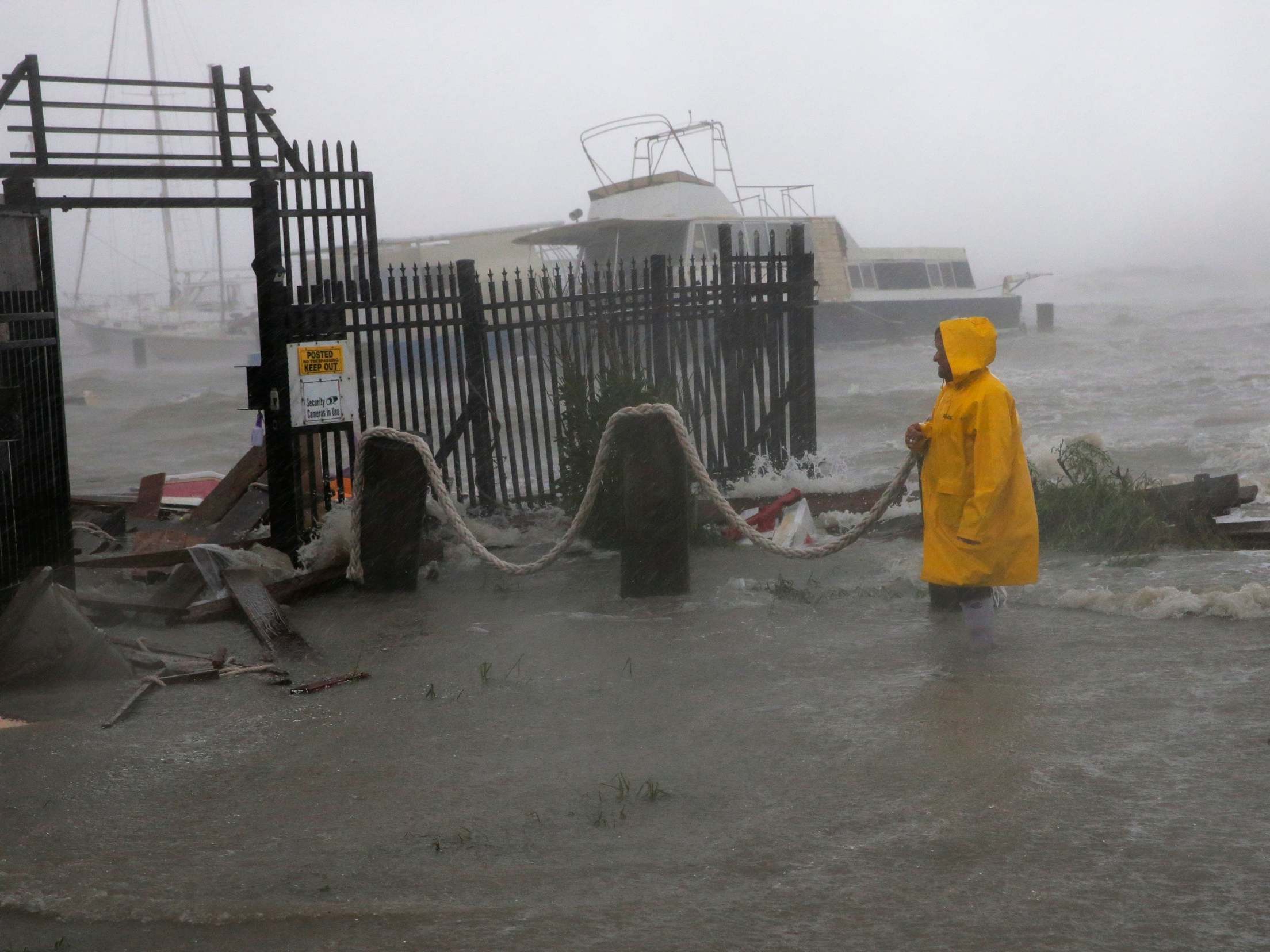Coastal flooding from rising sea-levels could wipe one-fifth of global GDP by 2100
New research suggests 'a 1-in-100-year extreme flood event will be10 times more frequent' by the end of the century, writes Louise Boyle


Coastal flooding is projected to increase by 50 per cent by the end of the century, according to a new study, with hundreds of millions of people in the path of deluges and trillions of dollars of infrastructure at risk.
The research, published on Thursday in Scientific Reports, forecasts that if greenhouse gas emissions continue to rise and flood defences are not built, the world’s land at risk of an extreme flood event could increase by 48% by 2100 to more than 800,000 square kilometres - an area more than twice the size of Germany.
This would put 225 million people in the path of extreme flooding, along with assets estimated at $14.2 trillion (or 20% of global GDP).
“A warming climate is driving sea level rise because water expands as it warms, and glaciers are melting. Climate change is also increasing the frequency of extreme seas which will further increase the risk of flooding,” lead author and University of Melbourne PhD candidate Ebru Kirezci said.
“What the data and our model is saying is that compared with now, what we see as a 1-in-100-year extreme flood event will be 10 times more frequent because of climate change.”
The hotspots of potential flooding span the globe: from south-eastern China and Australia's Northern Territories to Bangladesh, West Bengal and Gujarat in India; the US states of North Carolina, Virginia and Maryland and north-west Europe including the UK, northern France and northern Germany.
The study involved researchers from a collection of international institutions including the engineering department at the University of Melbourne, the IHE Delft Institute for Water Education, Vrije Universiteit Amsterdam, University of East Anglia and the Global Climate Forum in Germany.
Co-author of the report Professor Ian Young said: “This data should act as a wake-up call to inform policy at global and local government levels so that more flood defences can be built to safeguard coastal life and infrastructure.”
The analysis is based on a worst-case climate scenario where carbon emissions rise unabated - the "representative concentration pathway" of 8.5, with a temperature increase of around 4.3C above pre-industrial levels by 2100 - one of the models set out by the UN’s Intergovernmental Panel on Climate Change (IPCC).
Under the Paris Agreement, countries have committed to keep global temperature rise well below 2C this century and aim for the increasingly ambitious cap of 1.5C of warming.
The analysis did not account for flood defences, such as sea walls and dykes, already established in northern Europe, for example. However, researchers warned that the extent of future flooding means that large areas of the world remain vulnerable to disaster unless urgent action is taken on the climate crisis, along with the bolstering of more widespread protective efforts.
“Our research shows that large parts of communities residing in low-lying coastal areas are at risk of being devastated so we need urgent action. Vulnerable areas need to start building coastal defences, we need to increase our preparedness, and we need to be following strategies to mitigate climate change,” Ms Kirezci said.
Even if dramatic action is taken to lower emissions, sea levels are still expected to rise in the coming decades with life-altering consequences for millions of people.
A UN special report on oceans, glaciers and ice sheets last year laid out dire predictions on what was ahead if the climate crisis is not addressed.
Global mean sea level has risen about 8–9 inches (21–24 cm) since pre-industrial times and has increased rapidly in recent decades. A third of that sea-level rise has happened in the past 25 years, according to NOAA.
By 2100, global sea levels are likely to rise at least one foot (0.3 meters) above 2000 levels, even if greenhouse gas emissions are dramatically curtailed.
If we fail to hit emissions targets, and the average global temperature rises to 2C or above, sea levels are expected to rise between 2 feet - 3.6 feet (61-110 cm) by the end of the century.
The consequences would be catastrophic. Many coastal cities would be swamped with floodwaters and low-lying island nations would disappear under the water.
Join our commenting forum
Join thought-provoking conversations, follow other Independent readers and see their replies
Comments